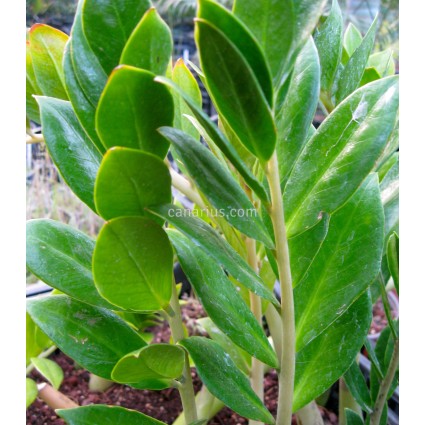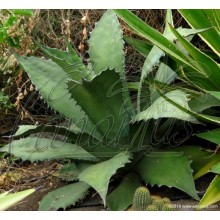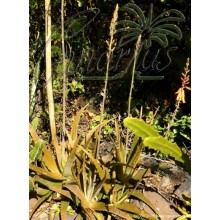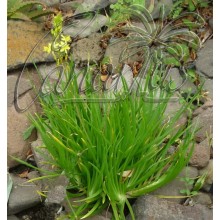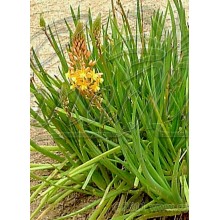Zamioculcas zamiifolia
This aroid from semi-dry areas is named so because of the similarity with some cycads in the genus Zamia. It is native to E - SE Africa, that resists to many different conditions. Its showy glossy leaves are produced from a stout underground, succulent rhizome.
It is very easy to grow, and the unusual flowers are a nice addition.It is normally evergreen, but becomes deciduous during drought.
Nuovo
It was described in 1829 as Caladium zamiifolium, and it was quite uncommon in cultivation until the 1990's, when it was offered in the market as a house plant.
It is very easy to grow, and the unusual blooms are a nice addition.I t is normally evergreen, but becomes deciduous during drought.
We offer a bare-rooted plant, grown in a 16 cm pot.
Picture of the blooming plant is from Wikimedia: "Zamioculcas zamiifolia bluete1" by Michelangelo76 - Sony Ericsson K750i. Licensed under Public Domain via Commons - https://commons.wikimedia.org/wiki/File:Zamioculcas_zamiifolia_bluete1.jpg#/media/File:Zamioculcas_zamiifolia_bluete1.jpg
| Coltivazione | Protetta |
| Origine della pianta | Africa |
| Presentazione | Radice nuda |
| Dimensione massima | 40cm-70cm |
| Famiglia botanica | Araceae |
| Luce | Sole |
| Luce | Ombra |
| Luce | Medio |
| Temperatura minima in inverno | 0 ºC a 10 ºC |
| Stagione della fioritura | Mesi più caldi |
| Tipo pianta | Erbacee |
| Colore | Verde |
| Cura | Vaso |
| Cura | Piante d'appartamento |
| Forma | Rizomi |
| Forma | Perenni |
| Forma | Tappezzanti |















